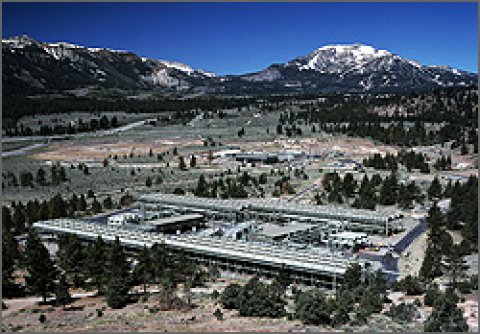Geothermal energy—a relatively untapped domestic energy resource from the heat of the earth—represents a reliable and nearly inexhaustible energy source, with greatly reduced greenhouse gas emissions. The Geothermal Technologies Office (GTO) focuses on positioning geothermal energy as a fully competitive and widely available component of the national energy mix. Within that broad goal, our objectives include reducing the costs and the risks of developing 30 GW of new undiscovered hydrothermal resources—nearly 10 times the current level of geothermal power deployment—developing exploration tools to lower the upfront risk of geothermal resource exploration, reducing the levelized cost of electricity (LCOE) of newly developed geothermal systems to $.06/kWh by 2030—including Enhanced Geothermal Systems (EGS), which has vast resource potential, pursuing technologies to harness lower temperature resources, and developing improved methods to create new geothermal reservoirs. The program will achieve these objectives by investing in RD&D and analysis efforts that improve technology and operational performance while decreasing project risks and costs.
To fully realize the benefits of domestic geothermal energy, the Office's technology portfolio prioritizes two closely related areas that balance near-term growth with long-term sector transformation: hydrothermal and EGS. Hydrothermal resources exist where there is both permeability and fluid in the subsurface while EGS reservoirs require rock stimulation to allow commercial-scale fluid flow. This program's balanced strategy addresses both current technical challenges faced by the geothermal industry and mapping new resource opportunities while making exploration technologies more cost-competitive. Concurrently, GTO seeks to advance EGS to unlock a vast 100+ GW potential. Initially, new exploration technologies and tools have a near-term impact; they help reduce the risk associated with finding and developing new hydrothermal systems and deploy both in-field and near-field EGS. Over time, these maturing technologies will also advance the development of greenfield EGS for the long-term. The Office's ongoing investments in systems analysis also help identify ways to reduce non-technical costs (e.g., regulatory and permitting issues) associated with geothermal energy development.
R&D efforts are focused in these areas:
DATA, MODELING, AND ANALYSIS
The Data, Modeling, and Analysis subprogram identifies and addresses barriers to geothermal adoption in the United States and assesses technical progress across the geothermal sector. The subprogram conducts analyses on geothermal grid valuation; policy, regulatory, and financing; economic analysis and validation; and environmental issues and develops tools and data capabilities that support geothermal exploration and development.
Enhanced Geothermal Systems
EGS technologies use directional drilling and pressurized water to capture energy from resources that were once considered uneconomical or unrecoverable.
Hydrothermal and Resource Confirmation
Hydrothermal resources are underground systems of hot water and/or steam. Conventional hydrothermal resources naturally possess water (hydro), heat (thermal) and permeability, the elements needed to generate electricity. Hydrothermal resources can be used for heating or making electricity depending on their temperature.
Low-Temperature Resources
Low-temperature resources are hydrothermal resources with temperatures at or below 300°F (150°C). Low-temperature geothermal energy is used for heating homes and buildings, agricultural drying, snow melting, and power generation.
Within these areas, GTO has more than 170 active research, development, and demonstration projects being conducted in cost-sharing partnerships with industry and academia. GTO also supports deployment activities designed to move advanced technologies into the geothermal industry, and conducts a broad range of systems analysis that supports and directs its activities.
Please note, heat pump projects are now managed by the Building Technologies Office because the DOE classifies geothermal heat pumps as a technology that makes buildings more energy efficient, productive, and affordable.


